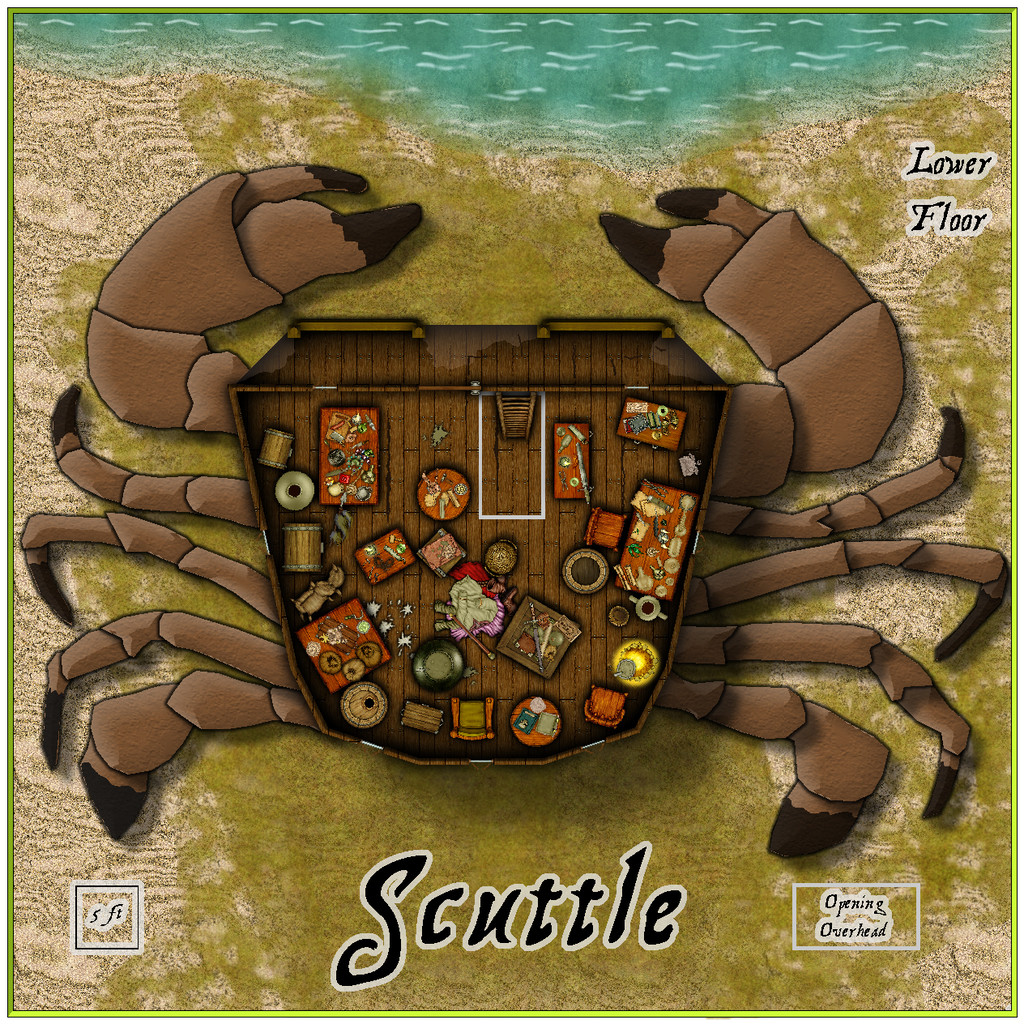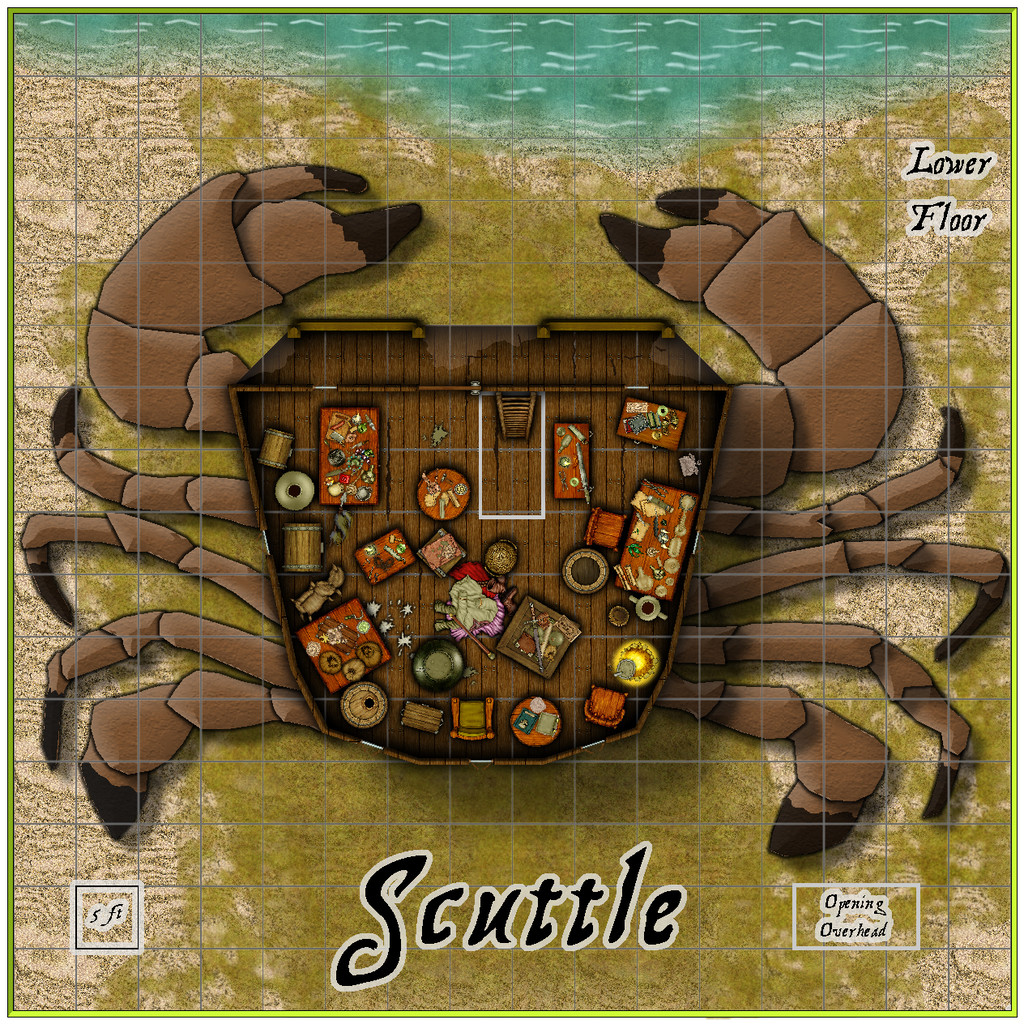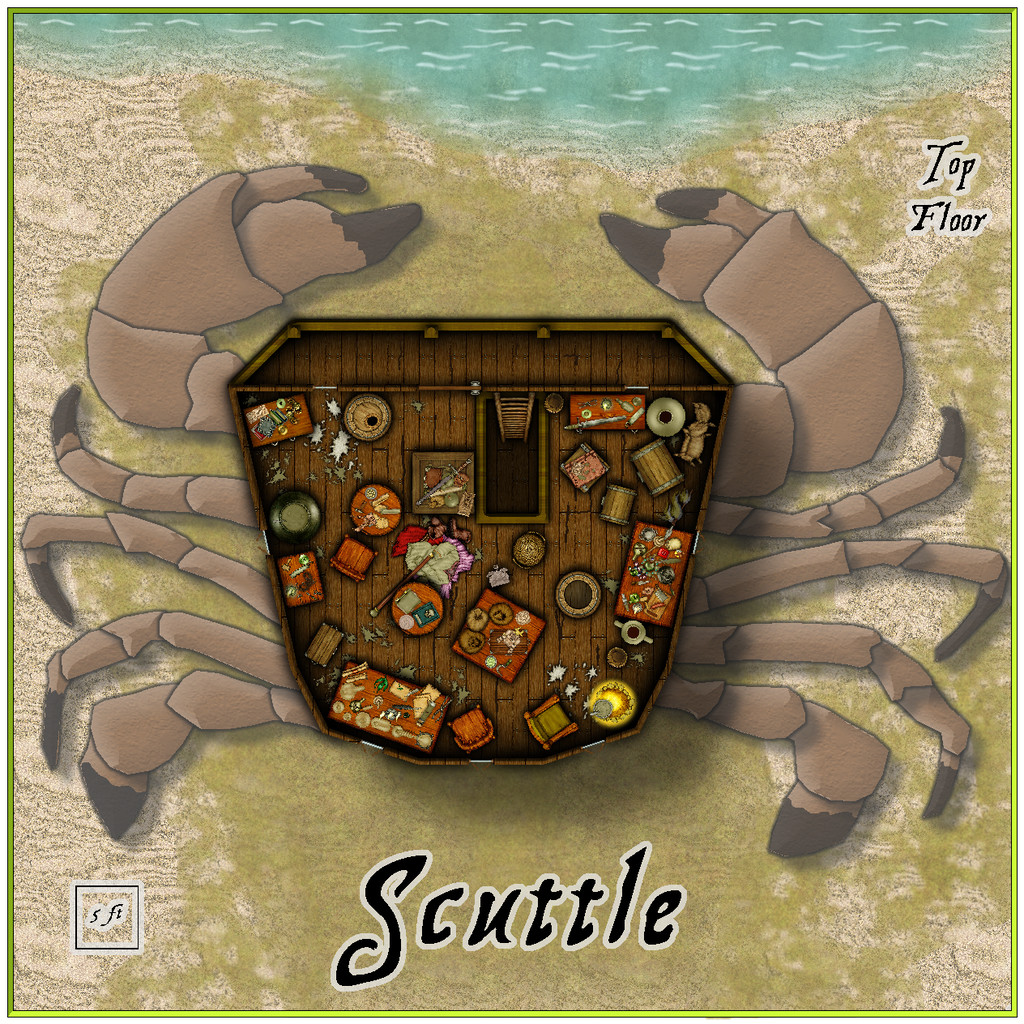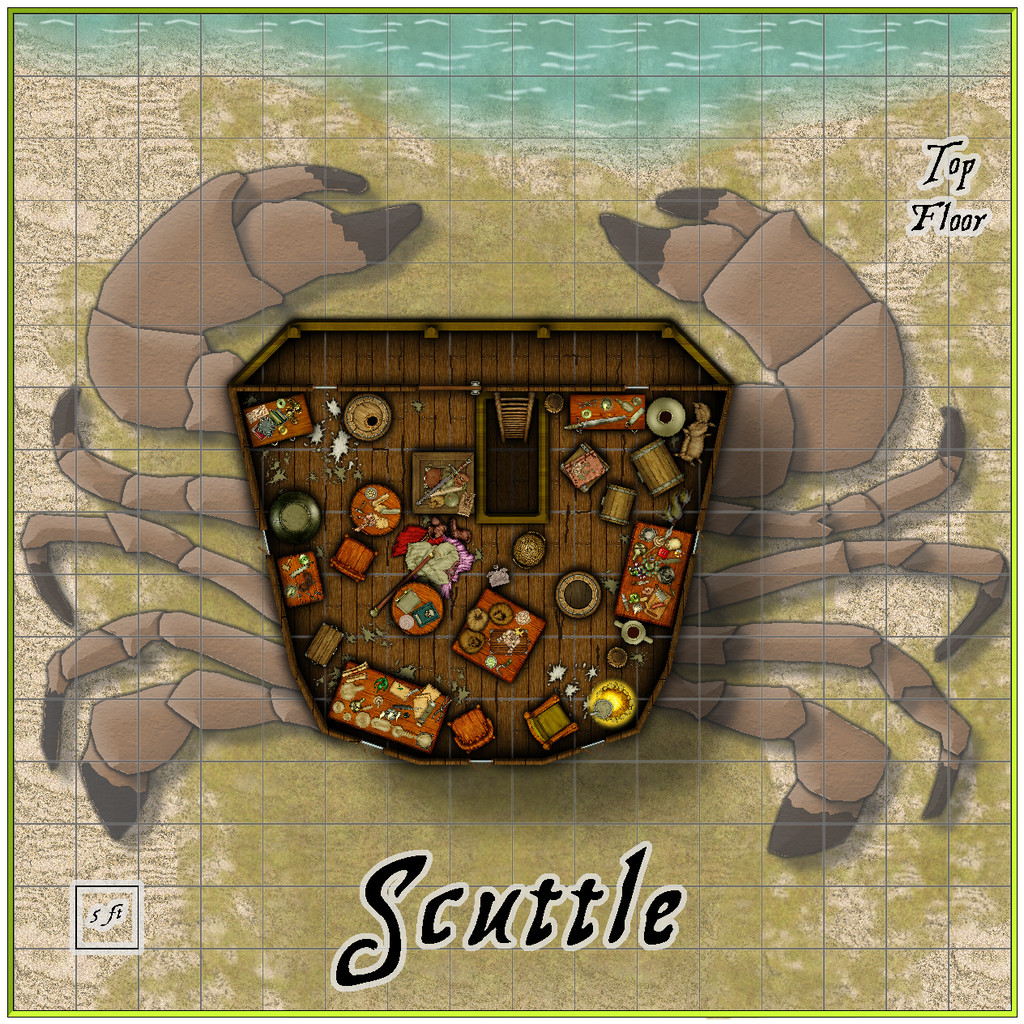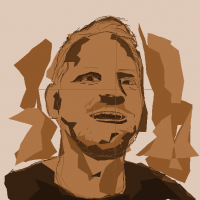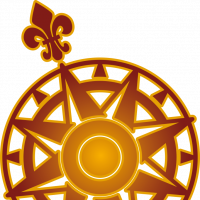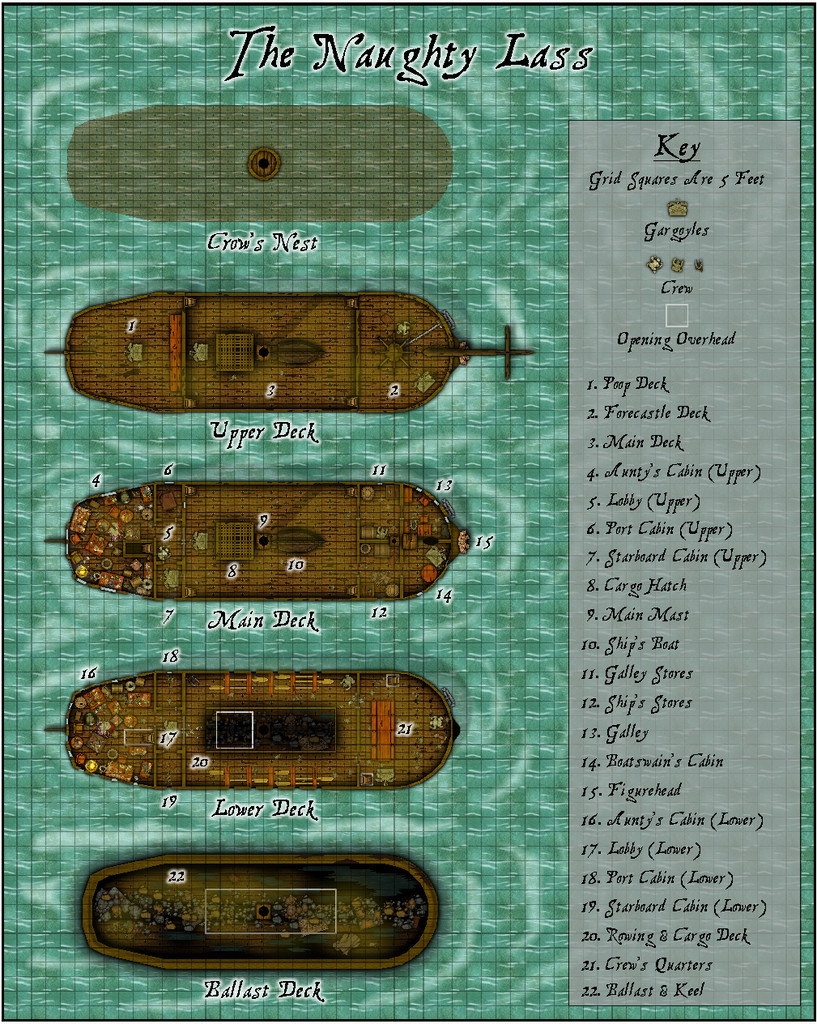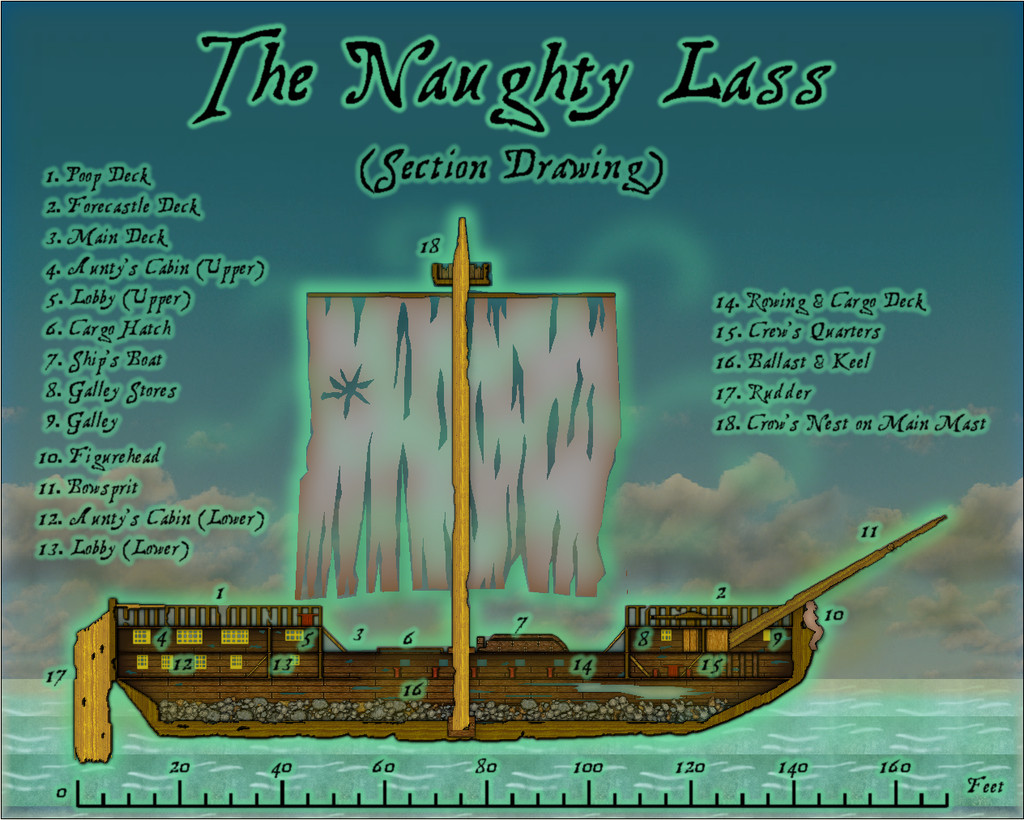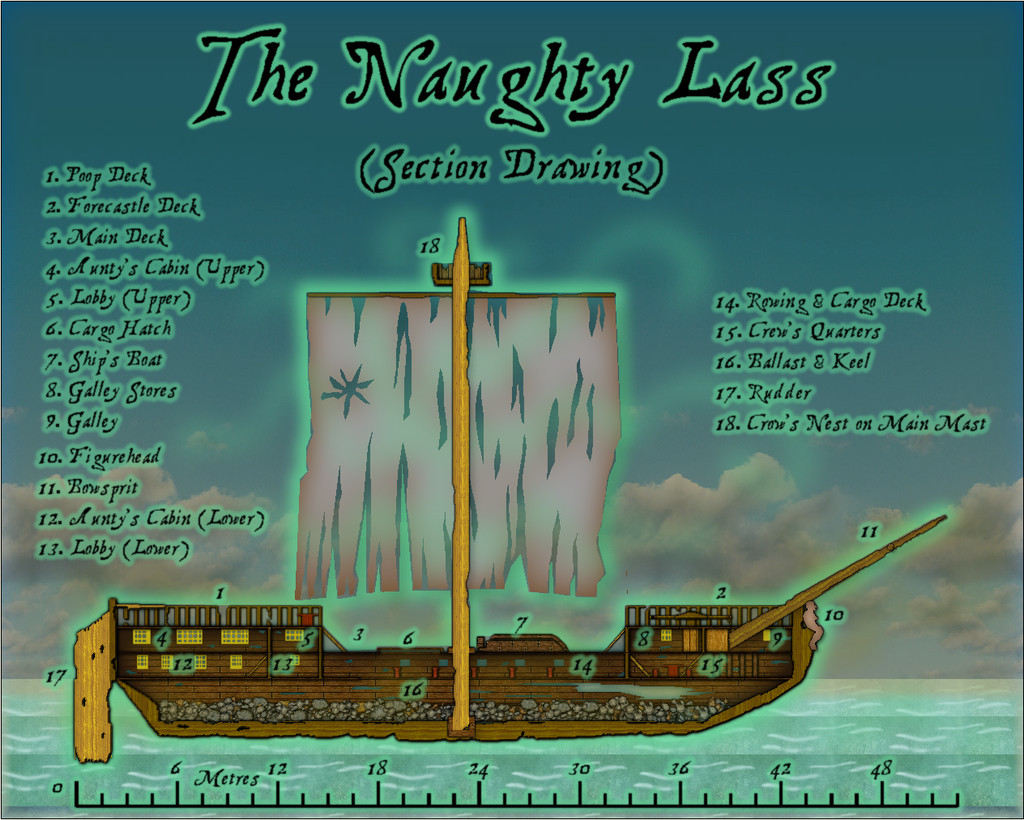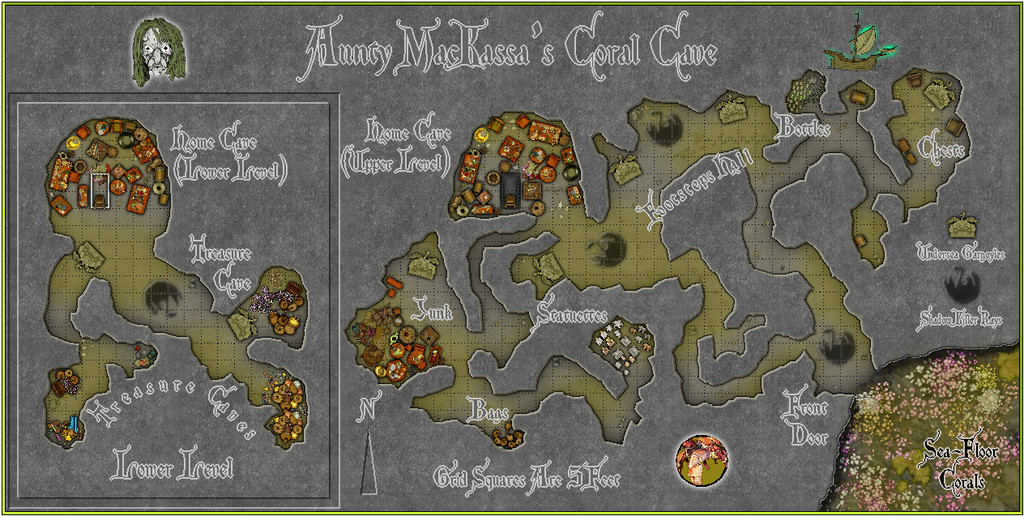
Wyvern
Wyvern
About
- Username
- Wyvern
- Joined
- Visits
- 3,151
- Last Active
- Roles
- Member
- Points
- 5,380
- Rank
- Cartographer
- Badges
- 24
-
[WIP] Modern city map
-
Community Atlas: Errynor - Aunty MacKassa's Home & Vehicles
-
Community Atlas: Errynor - Aunty MacKassa's Home & Vehicles
The second of Aunty's vehicles, and the concluding drawing in this whole Errynor Map 01 set, is Scuttle, as promised earlier, a giant-crab-legged, ramshackle, shipwreck hut. This has two floors, accessed by toggling in the Atlas' FCW map, with a further toggle option to add a five-foot grid:
For the crab legs, I tried sourcing top-down crab images online, but couldn't find one that worked well enough for what I wanted for tracing. There are few crab symbols in CC3+ and its add-ons, and although I did find one that looked good among the free Dundjinni Archives collection, it wouldn't scale-up properly without becoming too pixelated. In the end, I used that enlarged symbol as the base, and partly traced, partly redrew, the legs as individual segments on different Sheets, and then fitted them to the base of the hut, as now illustrated.
The bulk of the hut and its contents were copied from The Naughty Lass deck plans, the walls and windows redrawn, and a driftwood balcony added to the front of both lower and upper floors, partly to increase its overall crab-like appearance. By contrast to the ship, these drawings largely flew together quickly. A fresh PDF and text file of notes and - done!
Hopefully, more Errynor maps to follow!
-
Community Atlas: Errynor - Aunty MacKassa's Home & Vehicles
And so to the vehicles. The first of these, the wrecked ship, proved by far the most time-consuming in this Aunty MacKassa set. I'd selected the Sailing Ships pack from the 2009 Cartographer's Annual, which as noted previously, provides only limited help for drawing pre-gunpowder-period vessels, especially as I prepared these illustrations some time before the Annual was updated in April 2021.
My design for what became "The Naughty Lass" (it can sail beneath the waves and on the surface, after all!) was decided following heavy influence from Pauline Baynes' drawings of "The Dawn Treader" in C. S. Lewis' novel of its voyage, along with the nicely-detailed "Sea Ghost" ship drawings in the D&D scenario book "Ghosts of Saltmarsh" (2019, p. 53). This led ultimately to this deck plans map:
I got into rather a mess with this, however, as my initial idea had been to have one vertically-narrow rectangular plan view with the individual decks being toggled on and off one at a time within that condensed space using the map's Layers. Unfortunately, this ran into problems due to interference between the Sheet Effects in the lengthening stack of Sheets per deck, and between decks. So the deck plans had to be separated out, and the map greatly expanded, into the form now shown here. The Layers though ended up partly in the very condensed form as originally envisaged, partly in a more standard format for the decks I'd constructed later in the process. The Sailing Ships pack was meant to show just one deck per map, but that had seemed a little too clumsy for what will be really just a minor adjunct to another map once entered into the Community Atlas. I'd definitely draw the map differently as far as the Layers are concerned, if starting again now. At least it looks more or less OK still, I hope!
From the beginning, I'd also wanted to do a vertical section for The Naughty Lass, as that option is part of the Sailing Ships set-up. So I did, complete with "ghost ship" glow:
And an optional metric scalebar, via an Atlas toggle in the FCW file:
I also had to tone-down the original daytime-bright sky backdrop, to something more dismally matching Aunty's nature.
Again, a PDF and text-file set of notes will accompany both these drawings, in which you can find out about the nature of the ship's "adults-only" figurehead and how it relates - in Aunty's idea of dark humour, naturally - to the vessel's name...
For the Atlas, the Section Drawing is linked from the Coral Cave map via the "ghost ship" symbol in the top right corner, with the Deck Plans map connected from the Section Drawing only.
-
Community Atlas: Errynor - Aunty MacKassa's Home & Vehicles
Resuming the presentation of the final maps linked to Errynor Map 01 from previously, all concerning the deep-sea hag Aunty MacKassa, we must now zoom right in to Aunty's deep-sea-bed home:
From early in the process of constructing Aunty's lair, I wanted both a fixed-spot home cave, and at least one unusual vehicle, to let her get out and about in "her" 50-mile zone, as established earlier, more readily. This is what some hags have in real-world folklore after all, such as Baba Yaga's chicken-legged hut and flying mortar and pestle. I settled on two smaller "spare" random cave designs from what I'd downloaded from the Curufea's Random Cave Map Generator website earlier as suitable for her coral cavern lair, providing a pair of subterranean levels. These were chosen mostly because each had one cave of a form roughly like the stern of a ship, and a shipwrecked vessel seemed the most obvious choice for a deep-sea hag's vehicle. My idea was, being a faerie creature, and thus seemingly able to circumvent physical "laws" most folks take for granted as "normal", that Aunty would be able to shift her lair effortlessly between cave and vehicle whenever she chose, so a similar shape and size for at least part of both seemed reasonable. Then an idea for a second vehicle, suitable for amphibious sea to land transport, came about too, from which the clearest option was a hut made from another shipwreck, with - what else? - gigantic crab legs.
As I knew elements would need to be copied between all three of these maps, I decided to use the standard DD3 mapping package, except for the fonts. The Coral Cave map was done first (using the East Anglia font from the 2012 Cartographer's Annual):
The hatch and ladder between the levels of the Home Cave were chosen to fit with the ship's-cabin concept, of course, while the scatter of clutter and treasure (if it is) was distributed as a compromise between the classic D&D very cluttered hag's lair, and a map that could be read still. Although the deep-sea hag creature is largely an idea of my own of old, it has always been heavily influenced by D&D, and as the 5th edition allows powerful hags to have an assortment of servants, I came up with the illustrated variants of Undersea Gargoyles and Shadow Killer Rays here (the latter drawing partly on a 1953 short story by Joseph Payne Brennan, "Slime", which made a lasting impact on me when I first read it as a youngster). The illustrations for the latter, the north pointer, and the "sunken" border around the Lower Level map segment, were enhanced thanks to the chance publication of Remy Monsen's blog posting on the use of Bevel Effects to create sunken "carvings" on floors while I was preparing this map.
Then I thought it would be interesting to see just what Aunty MacKassa looked like. So I constructed this image of her, using CA3:
As usual, there'll be a PDF and series of text-file notes available in the Atlas to explain the game-relevant map details, from which you can discover why she has a long, bone hairpin in her grasp, and a pair of gold-tinted spectacles in her other hand, should you wish! Plus of course, I added her face to the Coral Cave map to serve as the Atlas link-point to this portrait.




